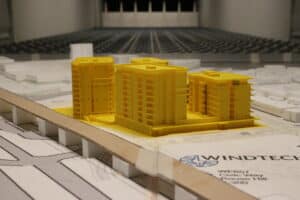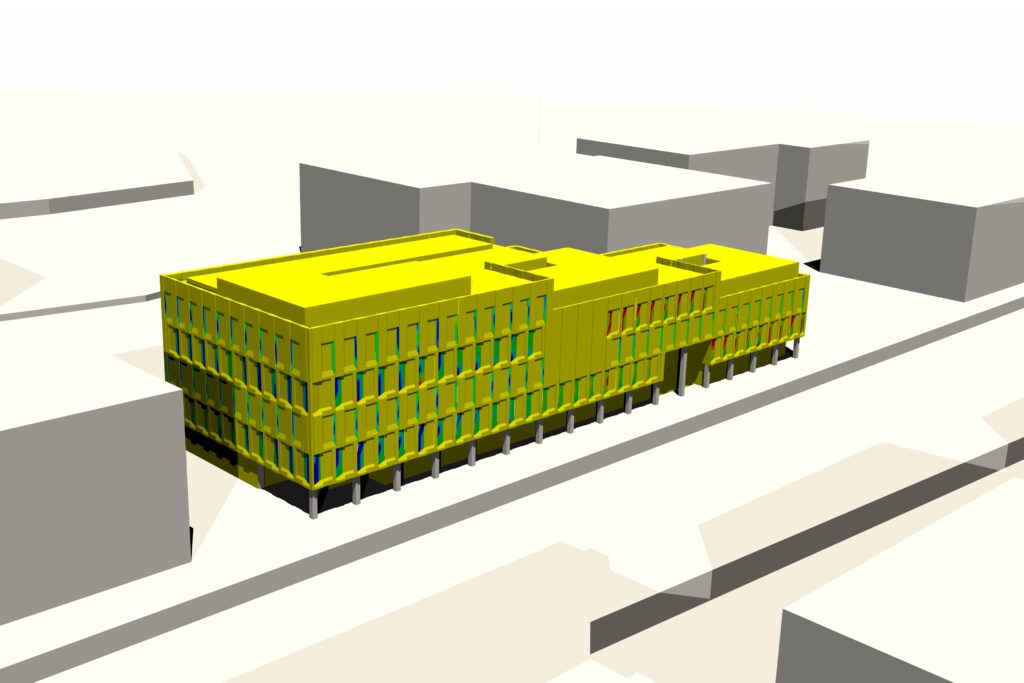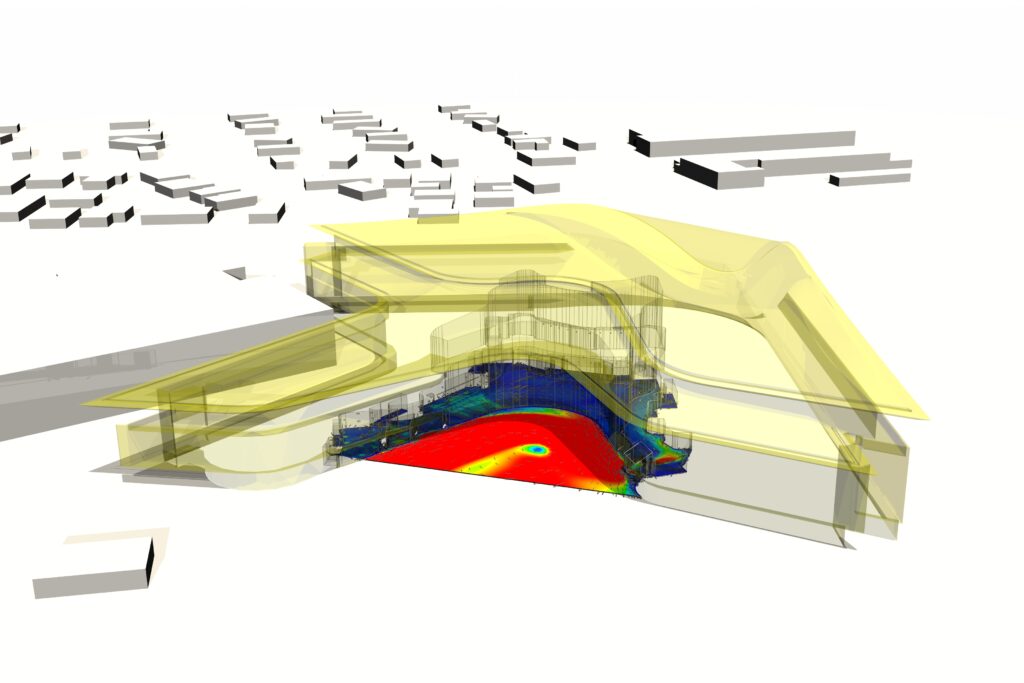Wind Entry and Natural Ventilation In Buildings
To reduce energy consumption in modern buildings, natural ventilation in buildings can be used. However, it must be implemented correctly to avoid compromising thermal comfort and air quality.
Through wind tunnel testing and Computational Fluid Dynamics (CFD), an accurate model of natural ventilation’s effectiveness can be achieved. Our methodologies consider all factors, such as external façade pressures, solar heat gain, thermal properties of materials, and HVAC systems, ensuring optimal natural ventilation.
Civic Way, Rouse Hill – Wind Tunnel Natural Ventilation model:
Windtech was engaged to provide wind advice on the natural ventilation of the buildings within the Civic Way development in Rouse Hill. We conducted a Natural Ventilation Wind Tunnel Study during the Development phase at our boundary layer wind tunnel facility, which consists of a wind tunnel with a 3.0m wide working section and a fetch length of 14m. Testing was then carried out using a 1:300 scale model of the development. The effect of the surroundings beyond the limits of the proximity model are then appropriately simulated in the wind tunnel using spires, trip-boards and roughness blocks. This provides accurate modelling of the mean wind speed and turbulence profiles, as well as well as the longitudinal velocity spectrum. This comprehensive assessment of natural ventilation characteristics allowed us to offer early design input to improve the development’s natural ventilation performance.
Wind Tunnel Natural Ventilation model
The Usher Institute, Edinburgh – CFD Natural Ventilation Assessment
Windtech consulted for the Usher Institute in Scotland and conducted a Natural Ventilation analysis during the preliminary design phase. Using CFD software, they assessed the entire façade for wind-driven ventilation across three wind directions. This study identified effective and less effective natural ventilation areas and suggested adjustments to enhance flow rate and cooling. Early analysis helped optimise the design, leading to a more wind-effective structure and cost savings. This approach ensures optimal natural ventilation in buildings. Learn more:https://windtechconsult.com/projects/wind-engineering-and-wind-tunnel-testing-facilities-in-uk/the-usher-institute-edinburgh/
Bunjil Library, Melbourne – CFD Wind Entry and Indoor Ventilation Assessment:
Windtech was commissioned to provide a CFD Wind Entry and Indoor Ventilation Assessment for the Bunjil Library in Melbourne. This assessment was undertaken through Computational Wind Engineering (CWE) which uses Computational Fluid Dynamics (CFD) techniques to model a ‘virtual wind tunnel’ and simulate conditions around the site, at entryway transfers and within the development’s main foyer. The simulations aimed to reproduce the macro level wind regime around the development, the development entryway designs and within the development’s main foyer. This allows us to provide accurate and effective recommendations to address any wind entry/ventilation issues that may arise.





